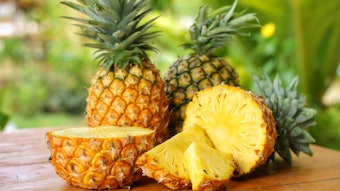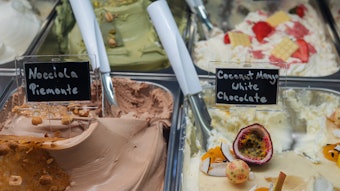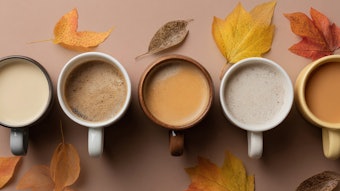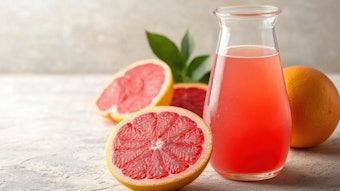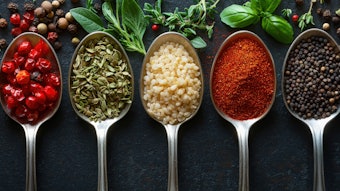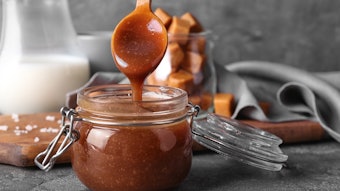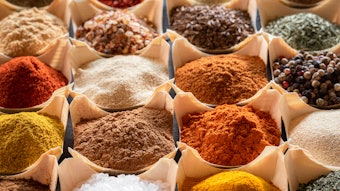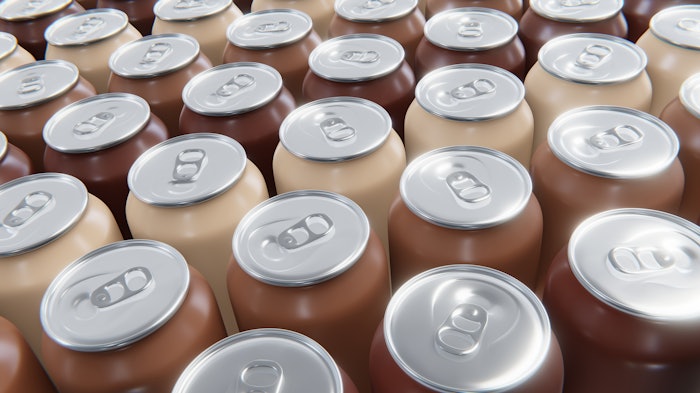
Today’s consumers are becoming increasingly busy, and they may not always have time to make a fresh pot of coffee or tea. They want something they can quickly pull out of the refrigerator and sip on the go.
Globally, the ready-to-drink coffee and tea market was projected to reach $44.64 billion in 2024 and is expected to grow at a rate of 12.8% by 2029, according to data from Statista. Further, user penetration is at 10.4% currently and expected to reach 12.8% by 2029. The top countries in 2024 in terms of revenue were China, the United States, Japan, South Korea, and Germany.
Both markets are growing, with iced coffee growing at a more rapid pace and iced tea growing at a slower, steadier pace. According to Innova Market Insights, ready-to-drink coffee is most often consumed at breakfast, while its tea counterpart is most often consumed at lunch.
“The altering lifestyles, which encourage on-the-go eating, and a growing trend of replacing meals with smaller nutritious snacks and drinks have resulted in the adoption of ready-to-drink tea and coffee,” states an analyst with ResearchAndMarkets.com. “The increasing prevalence of on-the-go consumption, particularly among the urban and younger demographics, has significantly contributed to its market growth.”
Quick Cup of Joe
Coffee is already a well-established and popular flavor. In fact, flavor producer Esarom named coffee as its flavor of the year for 2025, calling it a “sensory delight” with its wide range of flavors.
“Coffee flavor is more like an experience–less of a single sensory impression,” said Susanne Winter, marketing manager at Esarom.
The ready-to-drink coffee market saw a revenue of $11.9 billion in 2024, mostly from supermarket and convenience store outlets, according to data from Statista. This revenue is projected to grow at a rate of 2.97% annually over the next five years.
“One of the main reasons for the growth of the ready-to-drink coffee market in the United States is the changing preferences of consumers,” said an analyst with Statista. “With busy lifestyles and increasing urbanization, consumers are looking for convenient and on-the-go options for their coffee fix. Ready-to-drink coffee provides a convenient solution for consumers who want to enjoy a cup of coffee without the hassle of brewing it themselves.”
According to market intelligence company Spate, canned coffee experienced the largest increase in both volume and year-on-year growth in 2024. Further, coffee content has seen a year-on-year increase of 64.7% on social media platform TikTok. Popular hashtags by total views include #icedcoffee (3 billion views), #espresso (1.5 billion views) and #coldbrew (722.2 million views).
When it comes to flavor, brown flavors continue to dominate the coffee category, which includes staples such as caramel and chocolate. But some newer flavors are beginning to make their mark. According to Innova Market Insights, product launches flavored with spices and seeds have seen an 18% increase over the past four years.  Consumers tend to prefer indulgent flavors in their ready-to-drink coffee.Odua Images at Adobe Stock
Consumers tend to prefer indulgent flavors in their ready-to-drink coffee.Odua Images at Adobe Stock
Regionally, chocolate is the preferred coffee flavor in Europe, Asia Pacific, Central and South America, and the Middle East and Africa, according to GlobalData. In North America, Vanilla is the most appealing coffee flavor. Further, European consumers listed hazelnut as the third most popular flavor.
Further, consumers are using their ready-to-drink coffee purchases as a small indulgence. International Delight’s collaboration with Oreo and Victor Allen’s collaboration with Twix shows the fusion of indulgence treats and convenient coffee.
“Rich, indulgent flavors like Ferrero Rocher Frappuccino and gingerbread latte are growing in popularity, highlighting consumers’ desire for dessert-like coffee experiences,” Spate’s annual coffee report states. “Brands can capitalize on this trend by offering blends inspired by popular desserts, such as tiramisu or chocolate mousse.”
But Spate’s report says this doesn’t mean coffee lovers aren’t looking for health benefits, too. In fact, coffee beverages have been influential in the functional foods trend, specifically for its energizing effects.
Fancy a Spot of Tea?
Of course, there are those who prefer tea over coffee, and they have the same expectations from their ready-to-drink options. The ready-to-drink tea market is valued at $110.3 billion in 2024, according to Statista, and is expected to grow annually by 3.62% over the next five years. However, health concerns drive this category more than convenience compared to the ready-to-drink coffee market.
“Consumers worldwide are increasingly seeking healthier beverage options, and this trend is driving the growth of the ready-to-drink tea market,” stated an analyst with Statista. “Ready-to-drink teas are perceived as a healthier alternative to carbonated soft drinks and other sugary beverages. They are often made with natural ingredients and contain fewer calories and less sugar. Additionally, ready-to-drink teas offer functional benefits, such as antioxidants and herbal extracts, which further appeal to health-conscious consumers.”
The Tea Association of the USA noted in its annual State of the Industry report that while dollar sales remain strong in this category, volume is still a challenge, with a 2-3% decrease in gallonage.  The ready-to-drink tea category also lends itself to the value-added, functional beverage trend.V-anila at Adobe Stock
The ready-to-drink tea category also lends itself to the value-added, functional beverage trend.V-anila at Adobe Stock
Tea lends itself to various flavors, from bright and fruity to warm and spicy. Innova Market Insights’ data shows that 28% of new tea launches in the last year had fruit flavors, and 16% of new launches had spice and seed flavors. Furthermore, botanical teas make up another 16% of new product launches, and have seen an increase due to the growth of chamomile as an ingredient. This flavor is associated with soothing and relaxation.
“Consumers say their ideal RTD tea is not bitter, somewhat sweet with a green, black, herbal or white tea base,” states Symrise Flavor’s insights on tea flavors. “Preferred and core flavors include peach, mango, lemon and unflavored, while honey, vanilla and hibiscus are trending. In terms of health claims, organic and antioxidants are growing.”
The ready-to-drink tea category also lends itself to the value-added, functional beverage trend. Popular launches with functional claims include POM’s Pomegranate Elderberry Boost Tea, Teavana’s Defense Cinnamon White Tea, and Hoplark’s The Calm One Sparkling Hop Tea.
Looking to the Future
As this trend continues to grow, food and beverage companies will need to continue to elevate their ready-to-drink offerings. Consumers expect premium products with high-quality ingredients in both the coffee and tea segments.
Another area for growth for ready-to-drink coffee and tea is the use of social media. Brands like Starbucks, Dunkin Donuts, and Pure Leaf are leading hashtags on TikTok and frequently engage with audiences. Data from these social media platforms shows consumers are searching for creative options for their ready-to-drink beverages.
Both markets have an opportunity to strengthen their standing with younger consumers, specifically millennials, Generation Z and Generation Alpha. According to data from packaging manufacturer TetraPak, Gen Z and millennials are driving the demand for ready-to-drink coffee and tea in Southeast Asia because of their convenience-first lifestyle and drive for indulgence.
“They value convenience above all,” TetraPak’s report states. “Ready-to-drink tea and coffee are a good fit, because they offer a shortcut to gaining health and energy benefits, and they see these as beverages that will help them kickstart the day and provide energy without adding any extra stress.”
Life moves fast for young consumers, and their coffee and tea needs to move with them.
